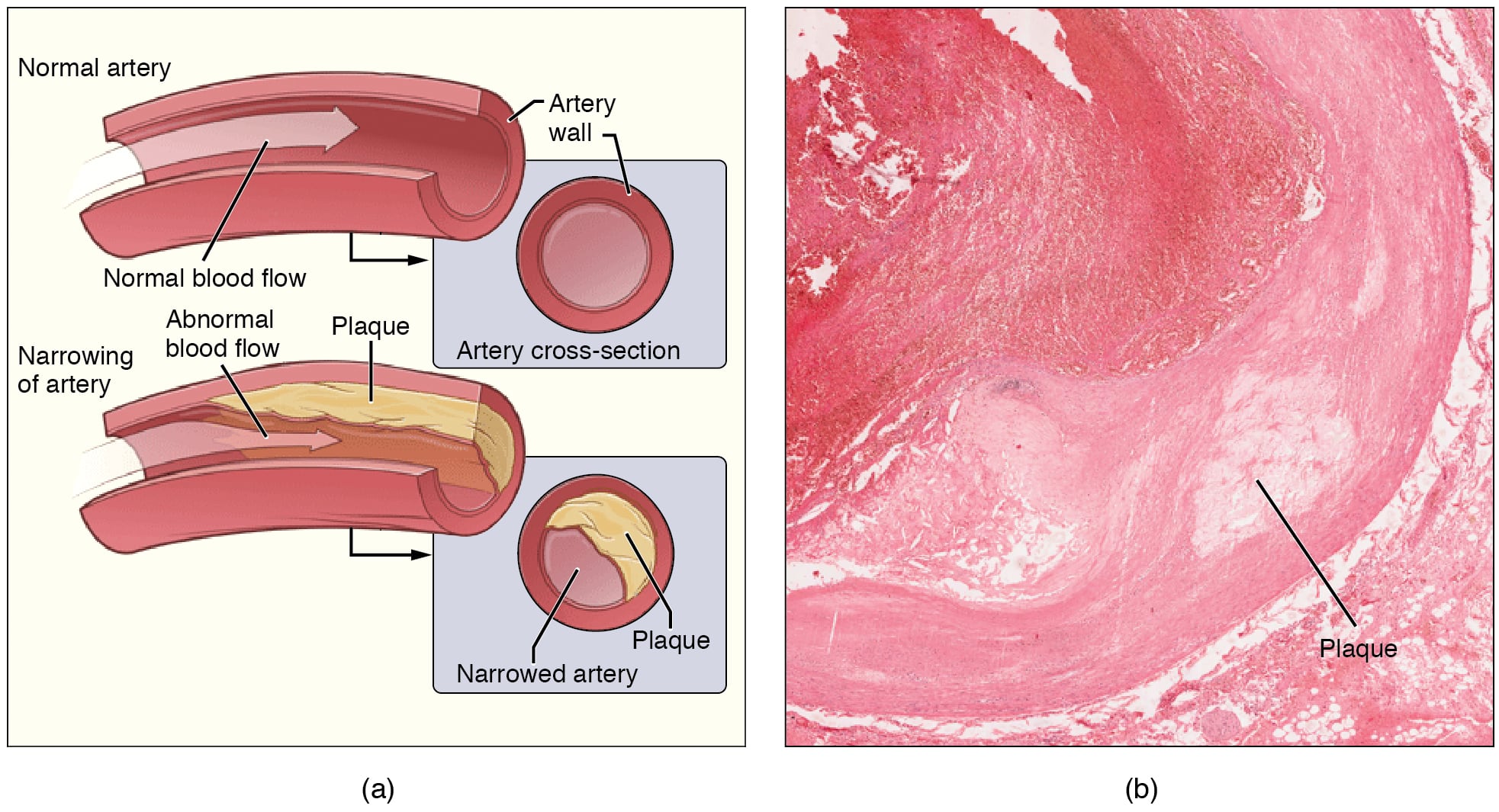Arteriosclerosis is the thickening and hardening of arterial walls. It is normally seen in aging blood vessels due to thickening of the media and intima from deposition of collagen and elastin. It causes normal age related increase in blood pressure especially systolic blood pressure. Pathological types are as follows:
I) Monckeberg’s medial calcific sclerosis: It is characterised by dystrophic calcification of medium and large arteries in individuals older than 50 years of age. It specifically affects the tunica media. Arteries become rigid but there is no narrowing of the lumen.
II) Arteriolosclerosis: It affects small muscular arteries and arterioles. It may be hyaline, hyperplastic or necrotizing.
| Type of arteriolosclerosis | Characteristic features |
| Hyaline | Seen in DM, HT; deposition of hyaline, proteinaceous material in tunica intima and media; increased endothelial permeability; narrowed vessel lumen |
| Hyperplastic | Seen in malignant hypertension, HUS, eclampsia, scleroderma; interlobular renal arteries involved; hyperplasia of smooth muscle cells of the tunica intima with “onion skin” appearance; duplication of basement membrane |
| Necrotizing | Seen in severe and malignant hypertension; fibrinoid necrosis plus hyaline sclerosis of small arteries and arterioles; neutrophilic infiltrate |
III) Atherosclerosis: Affects large and medium muscular arteries. Characterized by the formation of atheromas. Most commonly affects the aorta, coronary and cerebral arteries. Major risk factors are HT, DM, smoking, dyslipidemias, hyperhomocysteinemia, obesity, C.pneumoniae, CMV, Herpes virus infections, stress, physical inactivity, trans fats, male sex, postmenopausal females, familial predisposition etc.
Pathogenesis: The initial trigger for atherosclerosis is endothelial injury. It can occur from the direct trauma of increased blood pressure in hypertension, from microbial toxins, toxins in cigarette smoke, oxidized LDL, inflammatory cells etc. Platelet plugs are formed at sites of endothelial injury. Activated platelets and inflammatory cells like macrophages release cytokines such as IL 1 and TNF alpha that cause smooth muscle proliferation. This is further exacerbated by production of PDGF, TGF beta, FGF, Gamma Interferon and endothelins which cause smooth muscle proliferation and synthesis of matrix proteins such as collagen and proteoglycans. Smooth muscle cells migrate from tunica media to the subendothelial space, where they proliferate in response to growth factors.
Oxidized LDL plays a key role in the development of plaques. It downregulates ABCA 1 or ATP binding cassette transporter 1, which is involved in active efflux of cholesterol. Oxidized LDL is pro-inflammatory and recruits monocytes to the endothelium and promotes endothelial injury by free radicals. It enters the endothelial cell by binding to LOX 1 receptor. Reactive oxygen species and reactive nitrogen species oxidize LDL. Oxidized LDL is taken up by macrophages leading to accumulation of cholesterol. Lipid laden macrophages are called foam cells. Cholesterol is also deposited in the smooth muscle cells. They accumulate in the tunica media.

Oxidized LDL causes endothelial dysfunction. Nitric oxide synthesis by the endothelium decreases.
Collection of foam cells and fat laden smooth muscle cells forms yellow fatty streaks on the intima. It is the precursor to atheromatous plaques. Plaques have a soft core of lipid, foam cells, necrotic debris and cholesterol clefts (cleft like spaces due to clearing of cholesterol during histopath processing); and are covered by a fibrous cap of smooth muscle cells, connective tissue, collagen and extracellular matrix. Calcification, ulceration and thrombosis of ruptured plaques can cause acute ischemia and infarction of the affected area leading to AMI, cerebral stroke etc.
Sign up for free to take 2 quiz questions on this topic